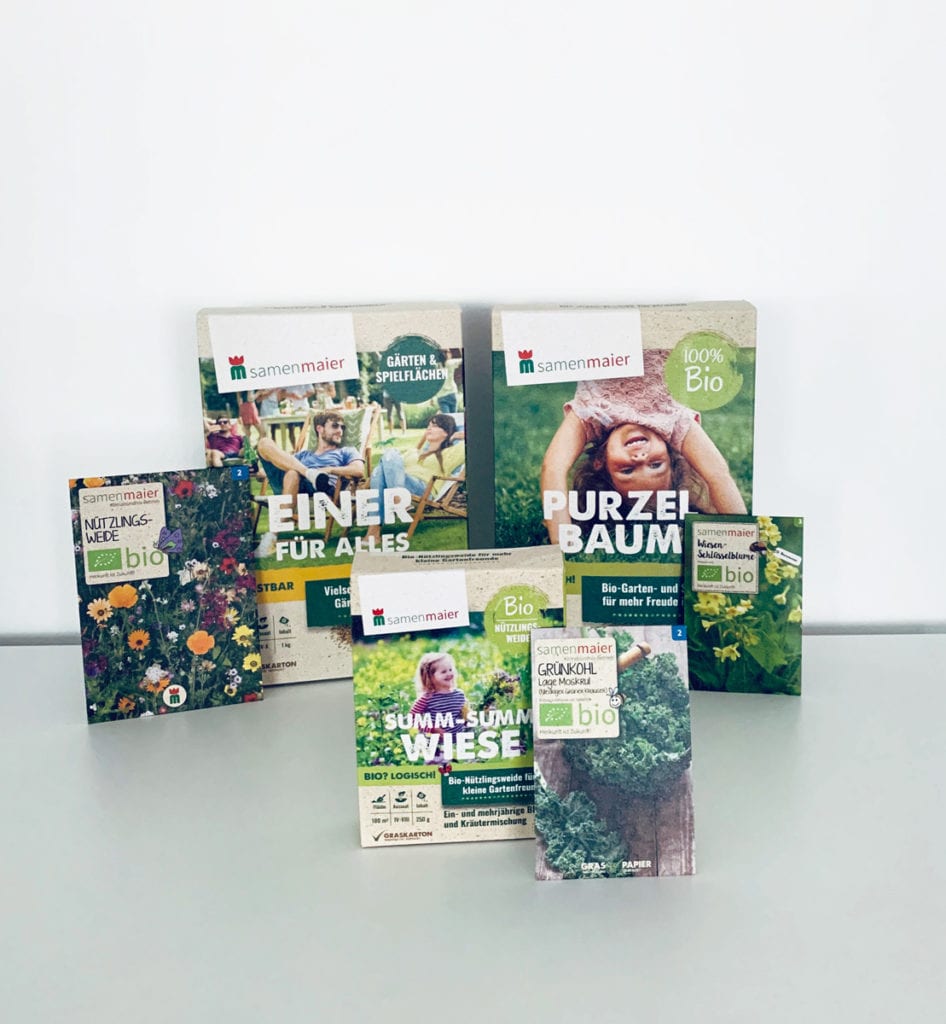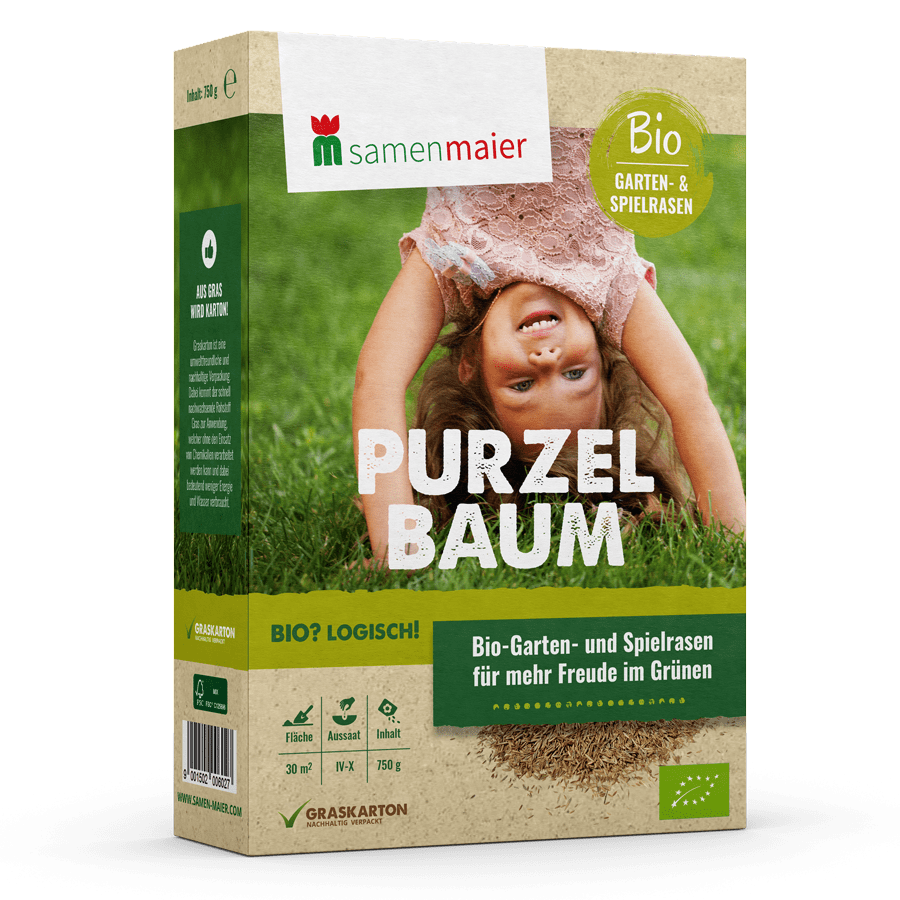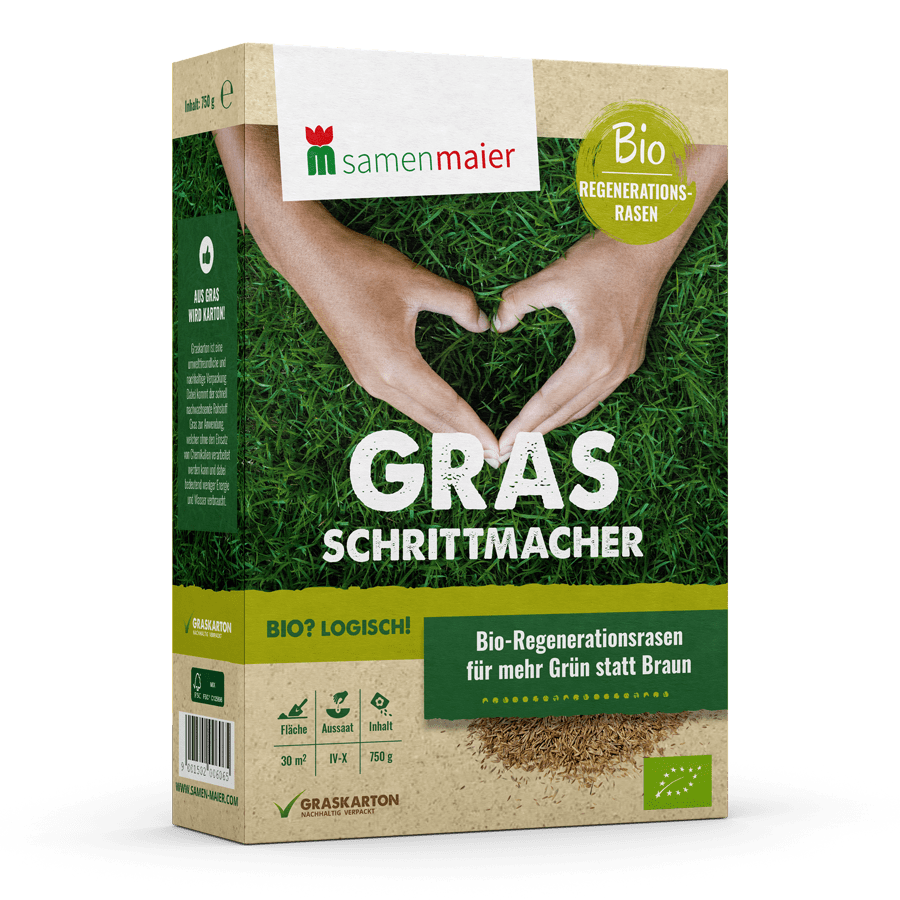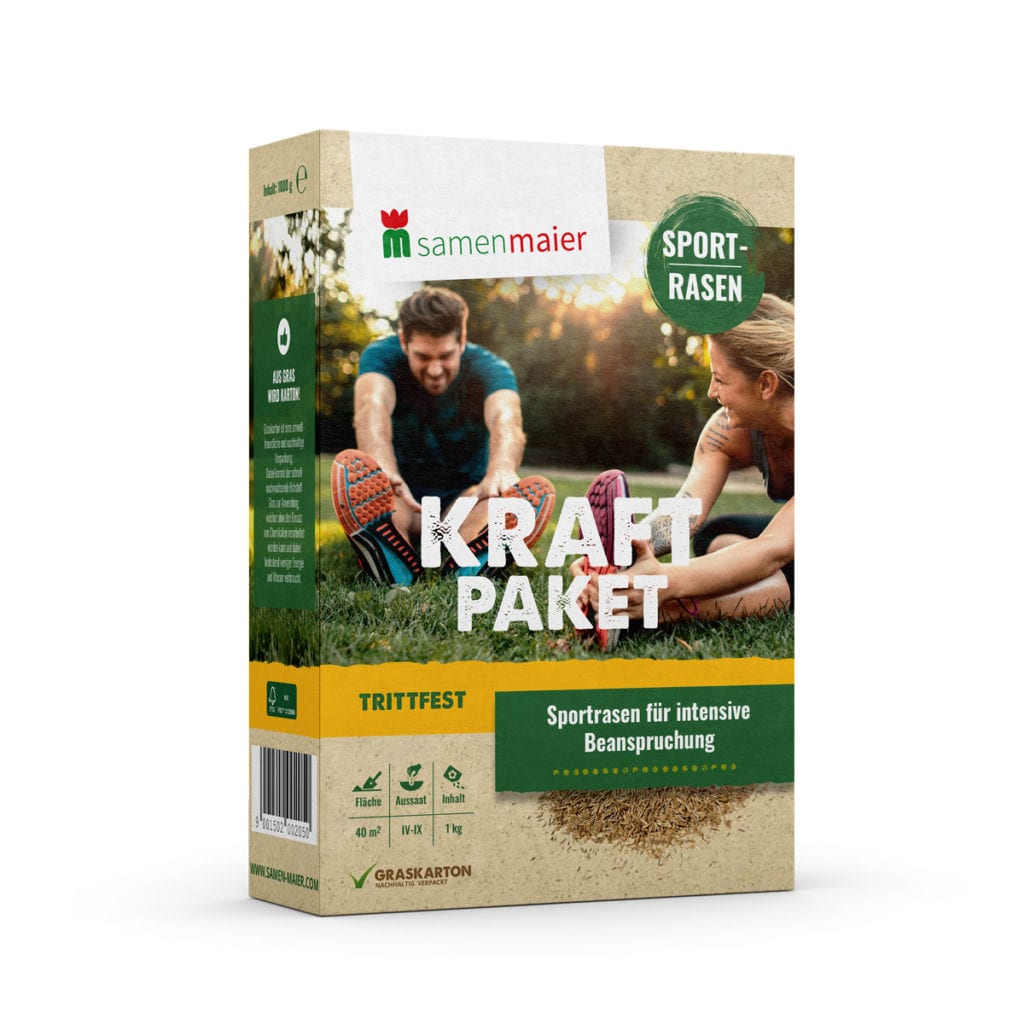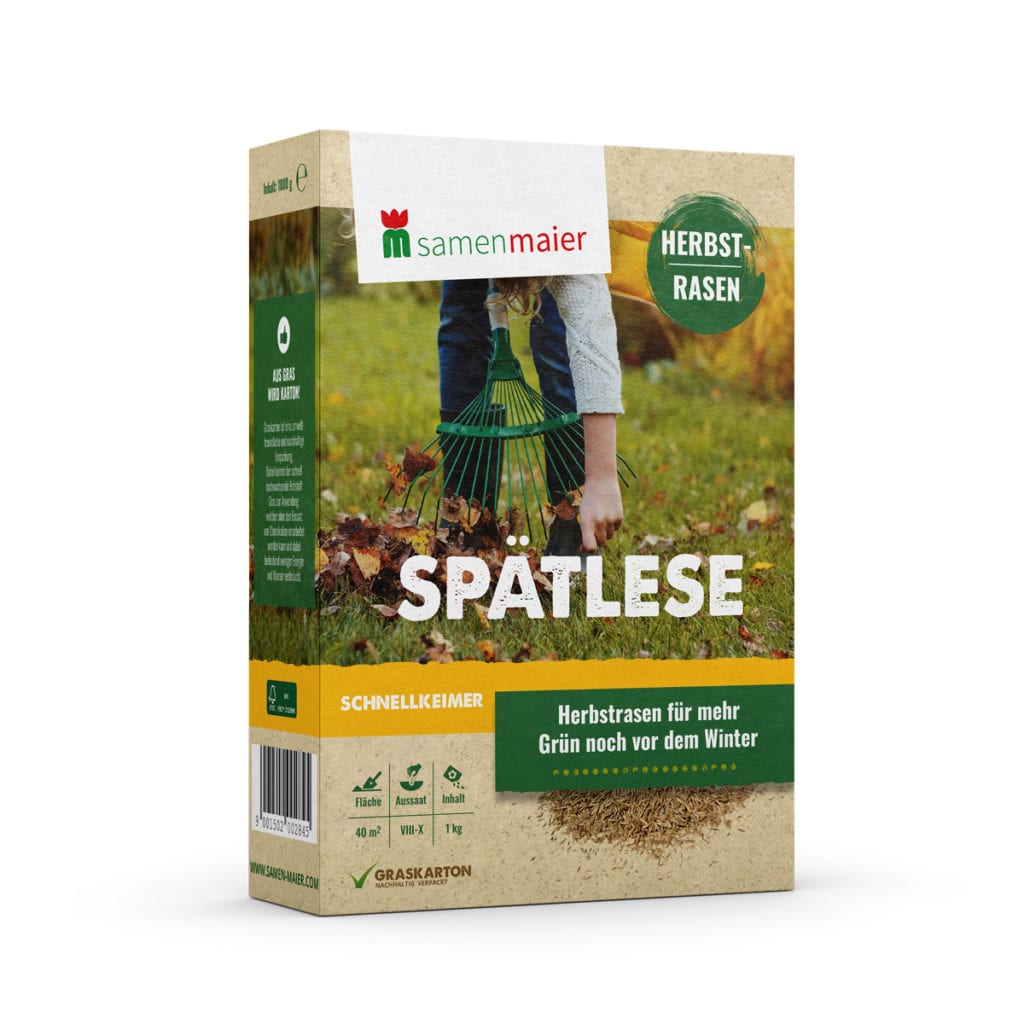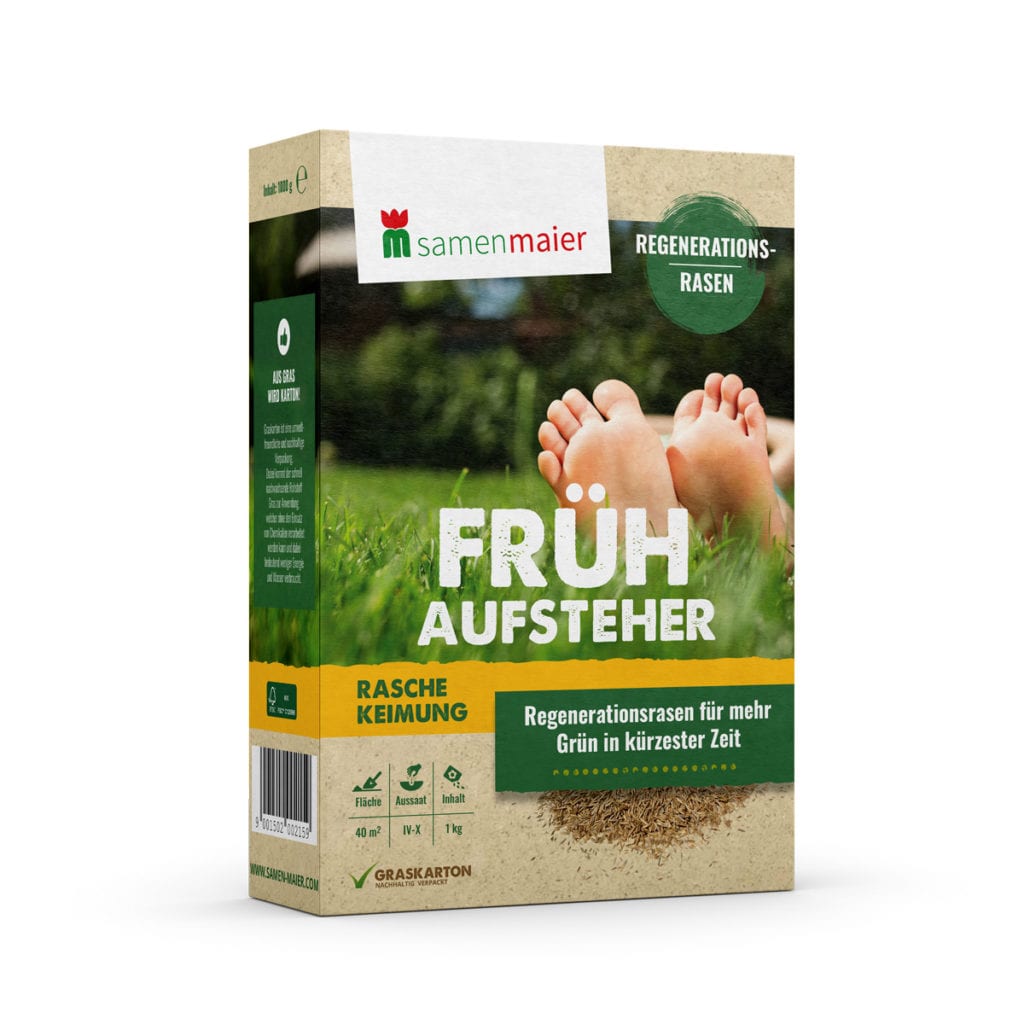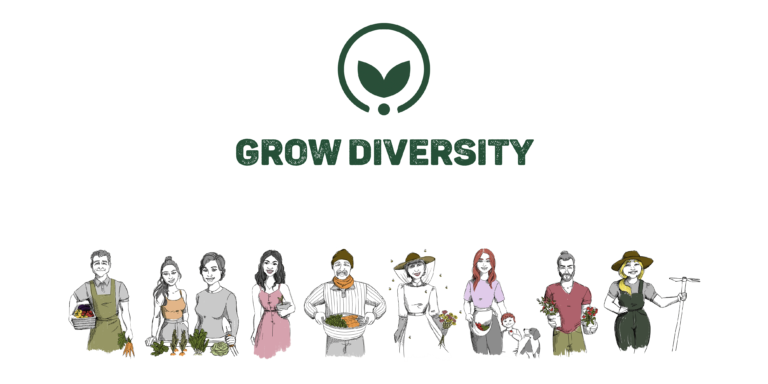Green packaging – Sustainable packaging with grass paper
Green Packaging
In 2019, we switched to an environmentally friendly and sustainable grass paper solution for packaging material for Organic and lawn seeds and have stuck with it since. With this measure, plastic is deliberately avoided as a packaging material in the business.
Finally our lawn products shine in a new design. Not only have we switched to environmentally friendly packaging material, but the design has also been completely revised.
Sustainable Advantages of Grass Paper
The ecological advantages of grass paper are revolutionary. The rapidly renewable raw material grass is used. In addition to avoiding the use of chemicals, grass paper also has a very good ecological balance. In comparison to traditional paper, the production of the raw material for grass paper saves about 75 percent of the CO₂ emissions. In addition, only 1 liter of water per ton of grass fiber material is needed – in contrast to 6,000 liters per ton of wood. A massive energy saving (approx. 150 kW/h per ton of grass fiber material compared to up to approx. 6,000 kW/h per ton of wood material) also makes grass paper an excellent packaging alternative. Grass paper is in use with a share of 50%.
This makes grass paper a real do-gooder and a particularly valuable substitute for plastic as a packaging material. By changing over to grass paperboard, the company is able to avoid about 4 tons of plastic, 7.5 tons of paper and 8 tons of cardboard annually.
The Plastic Problem
Plastic is used always and everywhere – and ends up where it doesn’t belong. This waste pollutes and destroys habitats. Unfortunately, life without plastic is no longer thinkable in our world. Plastic can be practical and useful. But often its use is short-sighted, simply unnecessary and avoidable. Austrians consume a full 100 kilograms of plastic per capita and per year.
About 35% of the world’s plastic consumption can be attributed to packaging alone. Much of this is avoidable. What perhaps less people know is that paper has a similar ecological footprint to plastic. Simply switching to paper or cardboard instead of plastic packaging would not sufficiently solve the environmental problem.
In addition, the air and water pollution caused by nitrogen oxides, sulfur dioxides and other chemicals with which the wood pulp fibers must be treated is significantly higher. Overall, almost twice as much energy is required for paper packaging than for the plastic alternative.
The solution grass paper or grass cardboard as packaging for organic seeds and organic lawn seeds is both visually and haptically not only an attractive natural packaging, but also makes a valuable contribution to the environment.
The main focus of our development was the production of an alternative virgin fiber material with the lowest possible environmental impact. This is achieved by a massive reduction of the industrial water demand (less than 1 liter per ton of grass fibre material compared to 6,000 liters of water per ton of wood material), a massive energy saving (approx. 150 kW/h per ton of grass fibre material compared to up to approx. 6,000 kW/h per ton of wood material), a resulting CO2 reduction of approx. 4.8 tons as well as the elimination of all process chemicals required in wood production.
The new material allows the replacement of 50% of the wood normally used. The responsible use of the above-mentioned resources is incorporated into the environmental balance sheets of products packed with grass paper. And the great thing is that grass grows back almost everywhere and all the time and can be harvested several times a year.
Summarized: A massive reduction of process water and CO2 emissions by using a fresh fiber material made of sun-dried grass are the decisive advantages of grass paper.
Per ton of grass fiber, you save 99% of water and 80% of energy in production. Likewise, no process chemicals are used in the production process and CO2 emissions are 75% lower than in the production of paper from wood.
